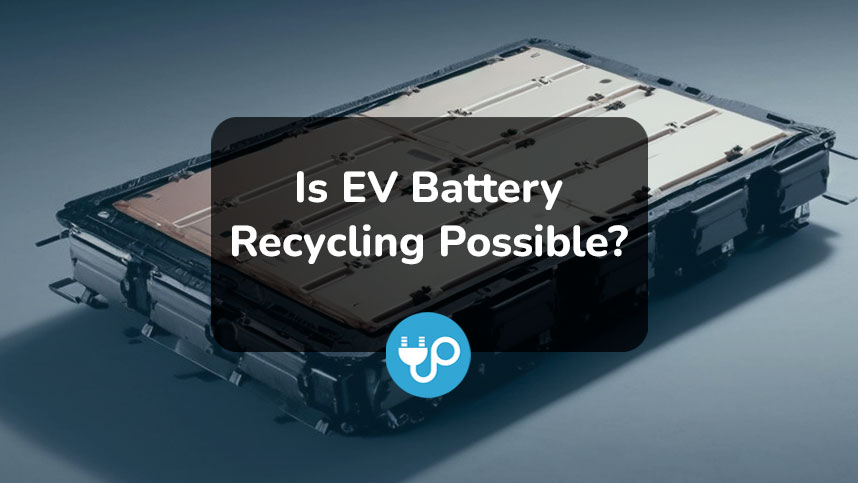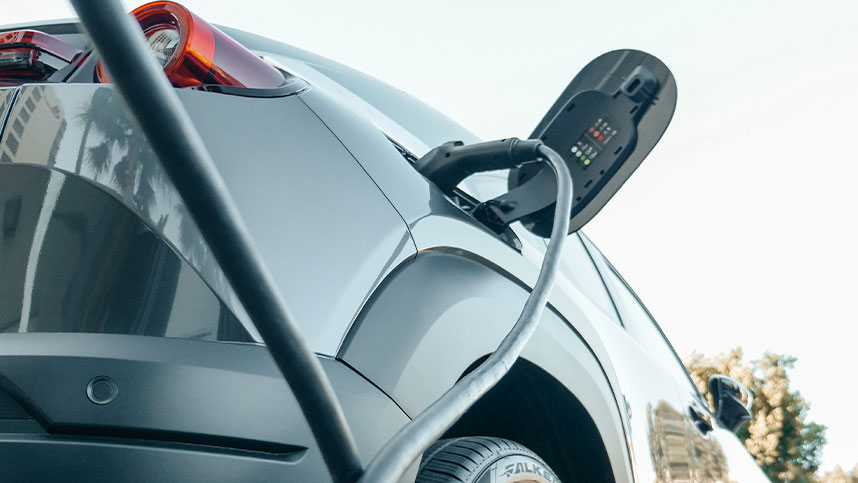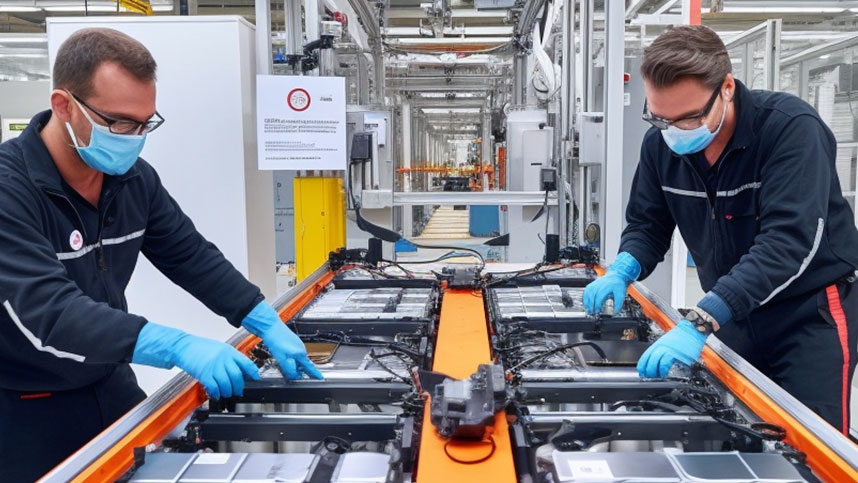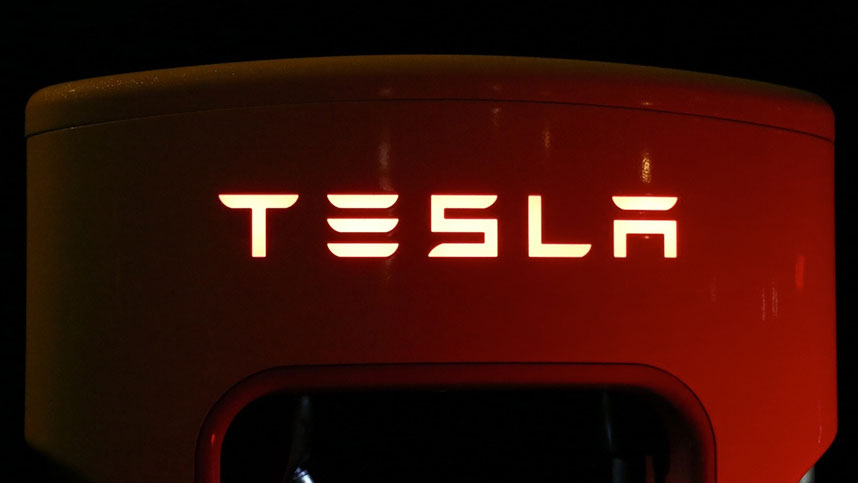
Is EV Battery Recycling Possible?
The global automotive landscape is undergoing a transformative shift, with the ascent of electric vehicles (EVs) promising a cleaner and more sustainable future.
As these electric cars get driven more and become increasingly ubiquitous on our roads, they carry with them an unprecedented need for sustainable end-of-life solutions for their power sources: the batteries.
This surge in electric mobility has cast a spotlight on a critical query - is EV battery recycling possible?
This article embarks on a journey through the complex realm of EV battery recycling.
Going into detail about the intricate composition of these powerhouses, the recycling processes that hold the key to their sustainable future, and the exciting prospects that lie ahead in the realm of environmentally responsible battery disposal.
Chapters
What are EV Batteries Made From?
To truly grasp the intricacies of EV battery recycling, we must first delve into the fundamental building blocks that constitute these remarkable energy storage units.
At the heart of most electric vehicles, you'll find lithium-ion batteries, a technology that has emerged as the cornerstone of modern electric mobility due to its potent combination of power and durability.
These batteries are intricate assemblies, comprised of several key components, each playing a vital role in the overall function of the battery:
Cathode
The cathode is a critical component, responsible for one half of the battery's chemical reactions during charging and discharging.
It's typically crafted from materials like lithium cobalt oxide, lithium iron phosphate, or various other lithium-based compounds, depending on the specific battery chemistry.
Anode
On the flip side, the anode plays an equally crucial role in the battery's operation.
It's constructed from materials such as graphite, silicon, or lithium titanate.
During charging and discharging, the anode stores and releases lithium ions, forming the other half of the electrochemical process.
Electrolyte
Acting as the conductive bridge between the cathode and anode, the electrolyte is a lithium salt dissolved in a solvent.
This solution facilitates the flow of lithium ions back and forth between the two electrodes, enabling the battery to store and release electrical energy efficiently.
Separator
The separator is a porous membrane strategically placed between the cathode and anode.
Its primary role is to prevent direct contact between these two electrodes while allowing the unhindered passage of lithium ions.
This separation is vital for the battery's safety and functionality.
Current Collectors
To complete the circuit, conductive materials like copper are employed for the anode and aluminium for the cathode.
These current collectors ensure the flow of electricity within the battery.
The intricate interplay of these materials lies at the heart of the lithium-ion battery's ability to store and discharge electrical energy effectively, powering our electric vehicles with remarkable efficiency.
Understanding these components is essential as we venture further into the world of EV battery recycling..
Is EV Battery Recycling Possible?
EV battery recycling is indeed both possible and imperative in the context of our evolving transportation landscape.
As the world increasingly embraces electric mobility to combat climate change and reduce dependence on fossil fuels, the recycling of EV batteries emerges as a cornerstone of sustainable practices.
Once an EV battery has reached the end of its life cycle, and its charge no longer lasts as long as it should, it can be recycled.
One of the primary motivations for EV recycling is the valuable materials housed within these batteries.
Lithium-ion batteries, the most common type used in electric vehicles, contain essential components like lithium, cobalt, nickel, and manganese.
These materials are finite resources, and their extraction can have significant environmental impacts, including habitat destruction and greenhouse gas emissions.
Recycling allows us to recover and reuse these resources, mitigating the need for further extraction.
Environmental sustainability is another key driver of EV recycling.
The environmental footprint of battery production is substantial, making recycling an essential part of reducing the overall impact of electric vehicles.
By recycling batteries, we reduce the energy consumption, emissions, and water use associated with manufacturing new ones.
This not only conserves valuable resources but also lessens the strain on our ecosystems.
Moreover, recycling contributes to the concept of a circular economy for EVs.
In a circular economy, products and materials are reused, refurbished, remanufactured, or recycled, creating a closed-loop system that minimises waste and reduces environmental harm.
EV battery recycling aligns perfectly with this philosophy, extending the lifespan of critical components and reducing waste in landfills.
How Does EV Battery Recycling Work?
Recycling EV batteries is an intricate yet vital process that stands as a linchpin in our quest for sustainable transportation.
This essential journey begins with the collection of used EV batteries, which can be sourced from a variety of channels, including dealerships, recycling centres, and manufacturers.
Once these retired powerhouses are gathered, they undergo a meticulous inspection.
This preliminary examination is critical for assessing the batteries' overall condition.
Batteries that have suffered severe damage may be deemed unsuitable for recycling due to safety concerns.
The next step in the recycling ballet is discharge, a procedure that ensures these batteries are safe to handle.
By reducing their stored energy, the risk of thermal incidents during the recycling process is significantly minimised.
With safety measures in place, the battery packs are dismantled, and individual cells are carefully separated from their collective housing.
These cells then undergo a transformative journey through the shedding phase.
In this stage, the cells are methodically shredded, breaking them down into smaller, more manageable components.
Among these components, we encounter familiar faces: the cathode, anode, and separator.
Then the recycling process takes an innovative turn as various methods come into play, such as hydrometallurgical or pyrometallurgical processes.
These sophisticated techniques are responsible for the ultimate goal of EV battery recycling: the recovery of valuable metals.
Within the hallowed halls of recycling facilities, lithium, cobalt, nickel, and aluminium are given a second chance at life.
However, this isn't the end of the line for these rejuvenated materials.
They embark on another journey, one of purification.
During this crucial phase, impurities are meticulously removed, rendering these materials pure and ready for reuse.
With the purified materials in hand, manufacturers can breathe life into new battery components.
These components will go on to power the next generation of EVs, forming a closed-loop system where sustainability and environmental responsibility reign supreme.
What is an EV Battery Turned Into after Recycling?
The transformation of EV batteries doesn't conclude with recycling; it extends into a myriad of intriguing and eco-friendly possibilities, echoing the ethos of sustainability.
One primary avenue where recycled EV battery materials find their second life is in the creation of new batteries.
Purified lithium, cobalt, and nickel, once liberated from their retired cells, become the fundamental building blocks for crafting brand-new battery cells.
This recycling loop serves as a powerful antidote to the demand for fresh mining, a process notorious for its environmental toll.
Moreover, it contributes to cost reduction, making EVs more accessible to a broader demographic of consumers.
Yet, recycling's reach doesn't stop at the boundary of vehicular applications.
Some batteries, while no longer meeting the rigorous demands of automotive use, retain the capability to function effectively in stationary energy storage systems.
This innovative repurposing grants these batteries a new lease on life, ensuring that their inherent energy storage potential is fully realised.
This not only optimises the utility of these batteries but also minimises waste, a cornerstone of sustainable living.
They can also find themselves in the heart of consumer electronics, powering an array of devices that permeate our daily lives.
Laptops, smartphones, and a multitude of gadgets benefiting from lithium-ion batteries owe a debt of gratitude to the reincarnation of EV batteries.
They can also serve as power sources in critical applications, such as backup generators, ensuring a steady supply of electricity during emergencies.
Off-grid solar systems also harness the enduring vitality of these batteries, becoming resilient pillars of energy self-sufficiency.
What Does the Future Hold for EV Battery Recycling?
The horizon of EV battery recycling gleams with promise, and several compelling factors are propelling it toward an eco-conscious and sustainable future.
First and foremost is the ever-expanding embrace of electric mobility.
As EV adoption accelerates globally, so too does the demand for effective recycling solutions.
A growing fleet of electric vehicles means an inevitable surge in end-of-life batteries.
This influx of retired batteries serves as a potent incentive for the development and expansion of recycling infrastructure.
As recycling scales up to meet this demand, it becomes more economically viable, benefitting not only the environment but also the industry and consumers.
Innovations in recycling technologies further fortify the future of EV battery recycling.
Ongoing research and development efforts continually refine recycling processes, enhancing efficiency and cost-effectiveness.
These advancements make recycling a more attractive and sustainable option, contributing to its long-term viability.
Stringent environmental regulations are a significant driving force behind the promising future of EV battery recycling.
Governments and regulatory bodies worldwide are recognizing the importance of sustainable practices in the automotive industry.
As environmental concerns mount, these regulations are pushing automakers to adopt more eco-friendly practices, including battery recycling.
Incentivised by the need to adhere to these standards, manufacturers are increasingly investing in recycling initiatives, further solidifying the industry's commitment to sustainability.
Resource scarcity, particularly concerning rare metals like cobalt, stands as a critical factor bolstering the future of battery recycling.
These finite materials are crucial for battery production, and their depletion raises alarms in the automotive industry.
Recycling becomes the linchpin in addressing this scarcity, as it allows for the recovery and reuse of these valuable resources.
What Companies Currently Offer EV Battery Recycling?
The landscape of EV battery recycling is populated by a cadre of forward-thinking companies and organisations, each making substantial strides toward a more sustainable future.:
Tesla
The pioneering electric vehicle manufacturer, Tesla, has taken significant steps in establishing its recycling prowess.
Within the sprawling confines of its Gigafactory, the company operates a cutting-edge recycling facility.
Here, the team meticulously dissects retired EV batteries, salvaging precious materials like lithium, cobalt, and nickel.
These reclaimed materials find their way back into Tesla's battery production cycle, embodying a closed-loop approach that underscores the company's commitment to sustainability.
Redwood Materials
Founded by a former Chief Technology Officer at Tesla, Redwood Materials is a notable startup dedicated exclusively to the realm of battery recycling and materials recovery.
With a mission to alleviate the resource strain on our planet and reduce the carbon footprint of EVs, Redwood Materials has rapidly become a prominent player in the recycling landscape.
Their advanced processes efficiently extract valuable components from retired EV batteries, contributing to the broader vision of a circular battery economy.
Umicore
On the global stage, Umicore emerges as a materials technology and recycling group with a strong focus on lithium-ion battery recycling.
Their top of the line technologies enable the efficient recovery of critical metals like cobalt, nickel, and lithium from discarded batteries.
Umicore plays a pivotal role in ensuring these finite resources are conserved, thus promoting a sustainable future for electric mobility.
Audi
Audi, a prominent name in the automotive industry, has embarked on its ‘Closed Loop’ program to address the recycling challenge posed by high-voltage batteries used in its electric vehicles.
This program embodies a holistic approach to recycling, ensuring that batteries return to Audi's production cycle as efficiently as possible.
By doing so, Audi pioneers a model of sustainability that extends the life cycle of EV batteries while minimising waste and resource depletion.
Toyota
The automotive giant Toyota is not to be left behind in the race towards sustainable battery recycling.
While they are renowned for their expertise in hybrid vehicle technology, Toyota is actively developing a closed-loop recycling system tailored to nickel-metal hydride batteries used in their hybrid models.
This initiative exemplifies Toyota's dedication to minimising environmental impact throughout the life cycle of their vehicles.
Conclusion
EV battery recycling is not just a possibility; it's a necessity.
As the world transitions to cleaner transportation solutions, recycling old EV batteries becomes vital to minimise environmental impact and maximise resource efficiency.
With advancements in recycling technologies, increasing adoption of electric vehicles, and a growing commitment to sustainability, the future of EV battery recycling looks brighter than ever.
It's a crucial step toward a more eco-friendly and sustainable automotive industry.
Blog Archive
- Vehicle to Load (V2L): What It Is & How It Works
- 16 Top Charge Point Operators in the UK
- 8 Types of EV Battery Explained
- Where Can I Charge My Electric Car?
- Electric Car Maintenance and Servicing Guide
- How Often Should I Charge My Electric Car?
- How to Check EV Battery Health
- Do Electric Cars Pay Road Tax?
- October 2024 Budget: Key EV News
- EV vs ICE – Which is Best?
- Should I Charge My EV to 80 or 90 or 100%?
- UK Government Announces Hybrid Sales Allowed Until 2035
- BEV vs PHEV – What’s the Difference?
- Definitely Not A Guru (Jim Starling) Reviews Joosup
- How Long Do Electric Car Batteries Last?
- 25 New Electric Car Brands on UK Roads
- General Election 2024: Major Party Net Zero Policies Compared
- Electric Car Service Costs vs ICE
- CHAdeMO vs CCS – What’s the Difference?
- Mr EV Reviews Joosup




